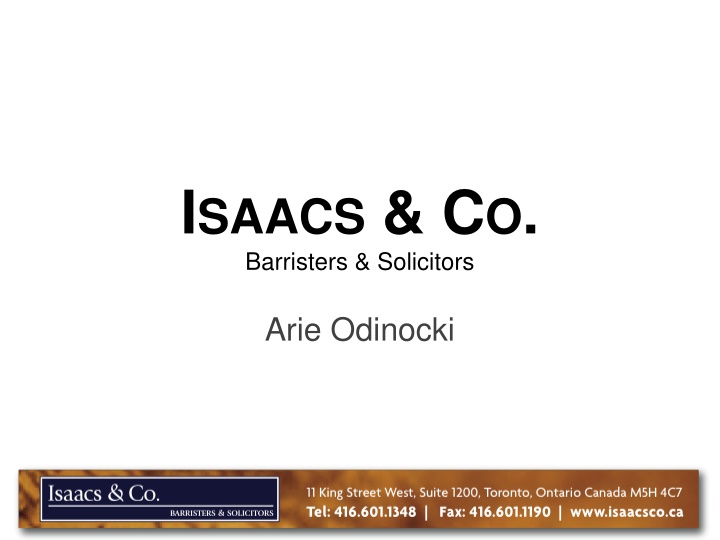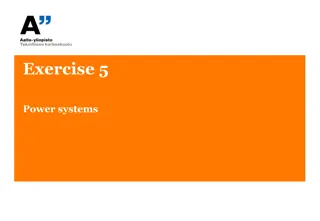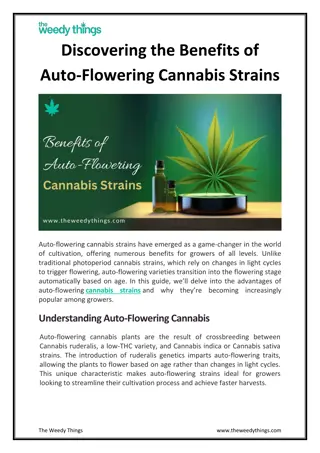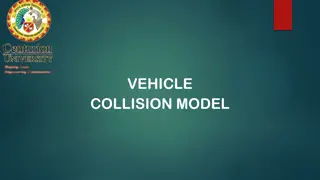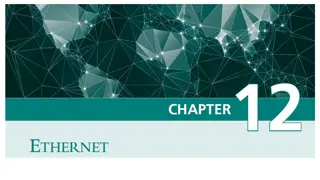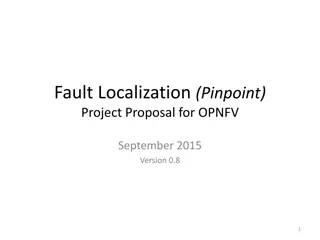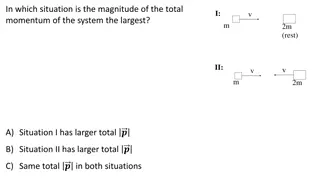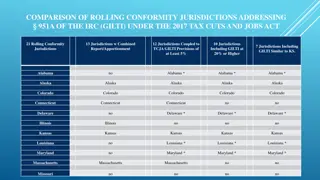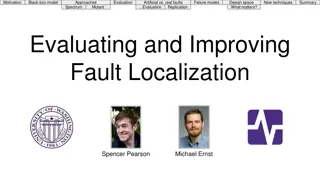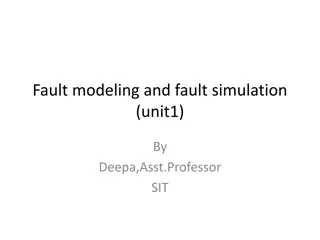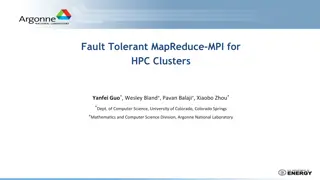ISAACS & CO.
Exploring the evolution of Ontario's no-fault/threshold schemes in car accident claims, from OMPP to current regulations, impacting tort rights and accident benefits. Insights on protected defendants, restrictions on suing in tort, general damages thresholds, income loss deductions, and more.
Download Presentation

Please find below an Image/Link to download the presentation.
The content on the website is provided AS IS for your information and personal use only. It may not be sold, licensed, or shared on other websites without obtaining consent from the author.If you encounter any issues during the download, it is possible that the publisher has removed the file from their server.
You are allowed to download the files provided on this website for personal or commercial use, subject to the condition that they are used lawfully. All files are the property of their respective owners.
The content on the website is provided AS IS for your information and personal use only. It may not be sold, licensed, or shared on other websites without obtaining consent from the author.
E N D
Presentation Transcript
ISAACS & CO. Barristers & Solicitors Arie Odinocki
Auto Collisions in No-Fault Jurisdictions - ONTARIO INTRODUCTION Until 1966, when the Ontario Government launched its first publically funded health plan, victims of car accidents in Ontario had to pursue their claims solely in tort. Between 1969 and 1990, a number of so called peaceful co-existence plans were put into place, providing limited accident benefits while preserving right to sue in tort intact. In 1990, the Ontario Government introduced the first no-fault/threshold scheme, known as the Ontario Motorist Protection Plan ( OMPP ). In fairly quick order, OMPP was replaced by successive no fault/threshold regimes, being Bill 164 (1994), Bill 59 (1996), Bill 198 (2003) and the current regime, which came into effect in 2010 (Regulations 289/10 and 34/10). Basic feature of the system: threshold and statutory deductions in tort offset by accident benefits, designed to provide early treatment and rehabilitation, promoting recovery and reducing need for tort damages
PROTECTED DEFENDANTS PROTECTED DEFENDANTS (s. 267.3 of Insurance Act) The owner or lessee of an automobile the occupants any person present at the scene must be defended by insurer licensed to undertake automobile insurance in Ontario; or Out of jurisdiction insurer who has filed an undertaking with FSCO obliging them to provide minimum statutory coverages
PROTECTIONS AVAILABLE Right to sue in tort is restricted against protected defendants: Threshold re: General Damages Statutory deductibles re: General Damages Income Loss Deductions Healthcare: Threshold and Collateral Benefits Deductions Protection from subrogated claims of collateral benefit insurers and OHIP
General Damages: Threshold and Vanishing Deductibles General damages for pain and suffering and damages under the Ontario Family Law Act for loss of care, guidance and companionship [FLA damages] cannot be recovered against a protected defendant unless the plaintiff s injury meets the threshold: Section 267.5(5) of the Insurance Act: Death or permanent serious disfigurement or a permanent serious impairment of an important physical, mental or psychological function. If the plaintiff s impairments surpass the threshold, there is a statutory deductible of $30,000, which is deducted from any award of general damages, unless the award exceeds $100,000. The statutory deductible for plaintiffs making claims for FLA damages is $15,000, unless the FLA damages are assessed at in excess of $50,000.
Income Loss Protected defendants are not liable for: income loss or loss of earning capacity claims (collectively loss of income claims ) which the plaintiff suffers in the first seven days after the accident; more than 70% of the amount of gross income that is lost after the first seven days and prior to trial After the commencement of the trial, liability of both protected and unprotected defendants is for 100% of the future gross loss of income. Collateral benefits are deducted from loss of income claims. Such claims are reduced by any amounts received or available for: Income replacement benefit received from the SABS insurer; Income replacement benefits under laws of any jurisdiction or any income continuation or benefit plan (Employment Insurance, Canada Pension Plan); and Sick leave plan arising by reason of the plaintiff s occupation (disability policies).
Health Care Expenses Protected defendants are liable for healthcare expenses if the plaintiff can establish a threshold injury. There is no requirement that the plaintiff establish a threshold injury as against a non-protected defendant in order to recover healthcare expenses. No Double Recovery: The amount of damages for health care expenses (regardless of whether the defendant is protected or not) is subject to a deduction of all payments received or available through SABS or under any other medical, surgical, dental, hospitalization, rehabilitation or long-term care plan or law.
OHIP and Subrogated Claims Section 267.8(17) of the Insurance Act strips anyone who has paid a collateral benefit to an automobile accident victim of their common law rights of subrogation against anyone. Section 267.8(18)(b) allows the Ontario Health Insurance Plan to subrogate as against non- protected defendants.
EXPOSURE: Protected v. Unprotected ASSUMPTIONS New York motorist sustained moderately serious injuries. General Damages are assessed at $90,000 His wife s loss of care, guidance and companionship claim is assessed at $15,000 Unable to return to his job for five years, he will suffer income loss of $75,000/year His disability policy will pay only $30,000/year He will incur health care expenses of $100,000 The case reaches trial list on the third anniversary of accident
EXPOSURE: Protected v. Unprotected Claim Protected Defendant Unprotected Defendant General Damages $60,000 $90,000 Pre-Trial Loss of Income $93,500 $135,000 Future Loss of Income $90,000 $90,000 Health Care Expenses $100,000 $100,000 Wife s FLA Claim 0 $15,000 TOTAL $343,500 $430,000
STATUTORY ACCIDENT BENEFITS Section 268(2) of the Insurance Act ensures that all accident victims in Ontario have access to SABS. Persons injured in accidents in Ontario and Ontario residents injured in automobile accidents outside Ontario claim SABS from: Their own car insurer; If they do not have insurance, insurer of car in which they are an occupant; If they travel in uninsured car, insurer of any other car involved in the accident; If no insurance available at all, from the Motor Vehicle Accident Claims Fund.
Establishing Entitlement to SABS To access SABS, the claimant must prove that he or she sustained an injury or impairment arising from an involvement in a motor vehicle accident No threshold requirement or enquiry as to fault at the stage of payment of benefits The availability of various accident benefits depends on the persons level or impairment. The SABS legislation recognizes three types of impairments: minor injuries: one or more of a sprain, strain, whiplash associated disorder, contusion, abrasion, laceration or subluxation and includes any clinically associated sequelae to such an injury non-catastrophic impairments ; and catastrophic impairments: paraplegia, quadriplegia, total and permanent loss of limbs, total loss of vision in both eyes and severe brain injuries
Benefits Available Type of Accident Benefit Minor Injury Non-catastrophic impairment Catastrophic impairment Income Replacement Benefits If the claimant is unable to return to work, he or she is paid 70% of gross income to a maximum of $400 per week. Non-Earner Benefits If the claimant does not qualify for IRB (for example, because he or she is a student) but is completely unable to carry on a normal life, he or she is paid $185 per week. There is a 26 week waiting period. After 104 weeks, the benefit increases to $320 per week. Caregiver Benefits (Not available if claimant elects Income Replacement Benefit or Non-Earner Benefit) Not available. If substantially unable to engage in caregiving activities, available at $250 per week for the first person and $50 for additional person in need of care.
Benefits Available Type of Accident Benefit Medical and Rehabilitation Benefits Minor Injury Non-catastrophic impairment Maximum of $50,000 available for 10 years. Persons who were under 15 years old at the time of the accident may collect SABS until they are 25 years old. Catastrophic impairment $3,500 maximum, unless the claimant can establish a pre-existing medical condition that will prevent him or her from achieving maximal recovery from the minor injury if he or she is subject to the $3,500 limit. Maximum of $1 million available for life. Attendant Care Benefit Not available. $3,000 per month maximum, not to exceed $36,000 in total. $6,000 per month maximum, not to exceed $1 million total. Housekeeping and Home Maintenance Benefits Death Benefits Not available. Maximum of $100 per week available for life. If fatality, $25,000 to spouse, $10,000 to supported former spouse and $10,000 per dependent.
Thank you Arie Odinocki
